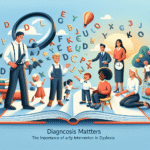
Introduction
In a world filled with choices, from what to wear to which career path to pursue, the act of decision-making has become a daunting task for many. You might find yourself entangled in the overwhelm of countless options, leading to a phenomenon known as decision fatigue. When decisions weigh you down, it affects not just your choices, but your mental clarity, emotional energy, and overall well-being. This article delves deep into recognizing and addressing decision fatigue, providing insights that will empower you to optimize your decision-making processes and reclaim your mental space.
Understanding Decision Fatigue
What is Decision Fatigue?
Decision fatigue refers to the deteriorating quality of our decisions after a long day of choices. Essentially, just as our muscles can get fatigued from physical exertion, our cognitive resources can become depleted from continuous decision-making. A study published in the journal Psychological Science highlighted that judges were more likely to grant parole earlier in the day, with increasingly unfavorable outcomes as their decision-making reserves dwindled. Such insights illustrate that when decisions weigh you down, the consequences can be significantly impactful.
Signs of Decision Fatigue
How can you recognize when decision fatigue is hitting you? Here are a few telltale signs to watch for:
- Indecision: Struggling to make even simple choices, like what to eat for lunch.
- Avoidance: Procrastinating or avoiding decisions, opting instead for passive acceptance.
- Irritability: Minor decisions feel overwhelming, leading to frustration or anger.
- Uninformed Choices: Making impulsive or irrational decisions due to fatigue.
The Science Behind Decision Fatigue
Understanding the neurological aspects can shed light on why decision fatigue occurs. Our brains consume glucose as fuel; extended decision-making activities deplete this resource, leading to cognitive fatigue.
Research Findings
A study conducted at the University of Minnesota found that participants who were asked to make multiple decisions throughout an experiment exhibited a significant decrease in decision quality as the day progressed. The research concludes that when decisions weigh you down, it is often linked to a decline in the mental resources necessary for effective judgments.
Case Study: The Eisenhower Matrix
One effective tool to address decision fatigue is the Eisenhower Matrix. Designed by former U.S. President Dwight D. Eisenhower, this matrix helps users categorize tasks into four quadrants based on urgency and importance:
- Urgent and Important: Do these tasks first.
- Important but Not Urgent: Schedule these for later.
- Urgent but Not Important: Delegate these when possible.
- Neither Urgent nor Important: Eliminate these tasks.
Analysis
This framework helps streamline decision-making by forcing individuals to prioritize effectively. For instance, a busy executive might feel overwhelmed by endless emails but could benefit from categorizing them, thus alleviating decision fatigue.
| Task Category | Actions |
|---|---|
| Urgent and Important | Complete ASAP |
| Important but Not Urgent | Schedule a time for completion |
| Urgent but Not Important | Delegate to an assistant |
| Neither Urgent nor Important | Delete or ignore |
Strategies to Combat Decision Fatigue
1. Limit Choices
The more choices we have, the harder they are to evaluate. Aim to limit your options to three or four in scenarios where you feel overwhelmed. This approach streamlines cognitive load and enhances decision quality.
2. Set a Decision-Making Budget
Just as you would manage your finances, keep track of how many decisions you need to make in a day and allocate your energy accordingly. Begin each morning with a clear list and prioritize your choices.
3. Create Routines
By establishing daily routines, you automate many decisions, conserving your mental energy for more critical thinking later on. For instance, you can set a standard breakfast choice, removing the need to decide first thing in the morning.
Real-World Application: A Case Study of Steve Jobs
Steve Jobs famously wore a black turtleneck and jeans every day. His rationale? “I didn’t want to spend my day making decisions about what I wear.” This simple wardrobe choice allowed him to conserve mental energy for more significant decisions in his professional life.
Analysis
Jobs’ method exemplifies how reducing even trivial decisions can enhance the clarity of more vital choices—an essential step in addressing decision fatigue when decisions weigh you down.
The Impact of Environment
Creating Supportive Spaces
Your environment plays a crucial role in how you make decisions. A cluttered workspace can increase stress, making it more challenging to think clearly. Conversely, a clean and organized environment creates a calming space conducive to better decision-making.
The Role of Technology
Consider utilizing decision-making tools like apps that can simplify your choices. For instance, meal planning apps can reduce the stress of daily dinner decisions by giving you a structured plan for the week.
Building Emotional Resilience
Mindfulness Techniques
Practicing mindfulness can have a significant impact on reducing decision fatigue. Techniques like meditation, deep breathing, and journaling help calm the mind, making it easier to sift through choices.
Recognizing Your Peak Hours
Everyone has different times during the day when they feel most energetic and clear-headed. Identifying your peak hours for decision-making can help you better allocate your cognitive resources.
Conclusion
In a world saturated with choices, it’s easy to feel overwhelmed. By recognizing when decisions weigh you down and implementing strategies to address decision fatigue, you can reclaim your mental clarity and resilience. Remember, your energy is finite—invest it wisely. Embrace the tips and techniques discussed, and watch as your capacity for making thoughtful, impactful decisions expands.
FAQs
1. What causes decision fatigue?
Decision fatigue is caused by the mental exhaustion that comes from constantly making choices throughout the day, depleting cognitive resources.
2. How can I recognize if I’m experiencing decision fatigue?
Signs include difficulty making commonplace decisions, irritability, avoidance of decisions, and the tendency to make impulsive choices.
3. What strategies can I use to combat decision fatigue?
Limit choices, set a decision-making budget, create routines, and utilize technology to simplify your choices.
4. How is decision fatigue related to stress?
Decision fatigue can lead to increased stress as relentless choices elevate mental strain, negatively impacting decision quality.
5. Can decision fatigue affect my health?
Yes, decision fatigue can lead to poor lifestyle choices, including dietary decisions, which may adversely affect physical and mental health.
By maintaining an awareness of how decisions affect your mental bandwidth, and regularly applying the strategies discussed, you can create a more balanced and enjoyable life. Don’t let decision fatigue weigh you down; tackle it head-on and reclaim your power!












